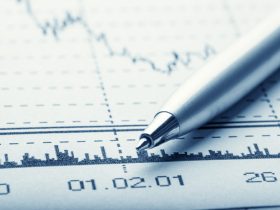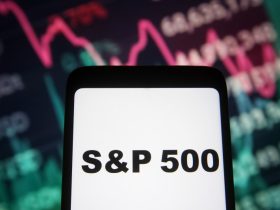Investors were evaluating a less-than-straightforward take on U.S. inflation Wednesday, with August’s consumer price index coming in close to or in line with expectations while providing reasons for the Federal Reserve to hike again by year-end.
U.S. stocks
DJIA
SPX
COMP
finished mostly higher, though Dow industrials failed to hold on to earlier gains, as traders debated the chances of another rate hike in November. Three-month
BX:TMUBMUSD03M
through six-month T-bill rates
BX:TMUBMUSD06M
were up slightly, but the 2-year Treasury yield
BX:TMUBMUSD02Y
slipped below 5% for its first decline in four sessions. And the ICE U.S. Dollar Index
DXY,
which moves according to the market’s expectations for U.S. rates relative to the rest of the world, swung between gains and losses.
Rising gas prices in August had Wall Street anticipating higher headline inflation figures of 0.6% for last month and either 3.6% or 3.7% year-on-year ahead of Wednesday’s session, and on that score August’s CPI report met expectations. The as-expected headline readings appeared to offer some comfort to many investors, even though the monthly gain was the biggest increase in 14 months and the annual rate jumped versus the prior two months.
Still, Ed Moya, a senior market analyst for the Americas at OANDA Corp. in New York, said “this was a complicated inflation report” and price gains are failing to ease by enough for the central bank to abandon its hawkish stance. Core readings which matter most to Fed policy makers came in a bit above expectations at 0.3% for last month, driven partly by a jump in airline fares, as the annual core rate dipped to 4.3% from 4.7% previously. According to Moya, “inflation will likely still be running well above the Fed’s 2% target for the rest of the year.”
“Today’s uptick in CPI could slightly increase the likelihood of a November interest rate hike and potentially delay the timing of any rate cuts until deeper into 2024,” said Joe Tuckey, head of FX analysis at London-based Argentex Group, a provider of currency risk-management and payment services.
As of late Wednesday, however, August’s CPI wasn’t putting much of a dent in the expectations of fed funds futures traders. They see a 97% likelihood of no rate hike next Wednesday, which would keep the fed funds rate at between 5.25%-5.5%, and a more-than-50% chance of the same in November and December, according to the CME Fed Tool. They also continued to price in the likelihood of no rate cuts through the early part of 2024.
While August’s CPI report failed to move the needle in stocks, Treasurys, the dollar, or fed funds futures during the bulk of Wednesday’s session, there was one corner of the financial market where the data did make more a difference: Traders of derivatives-like instruments known as fixings now foresee five more 3%-plus annual headline CPI readings starting in September, after adjusting their expectations to include January.
If those expectations play out, that would bring the total number of 3%-plus readings to six months, including August’s data, and produce a scenario that investors may not be entirely prepared for — the possibility that headline inflation doesn’t meaningfully budge from current levels soon.
Read: Why financial markets may be unprepared for a fourth-quarter ‘inflation surprise’
Central bankers care more about less-volatile core readings, but pay attention to headline CPI figures because of their potential to affect household expectations.
“While these numbers do not change our, and the market’s, expectations that the Fed will hold the target fed funds rate unchanged at the September meeting, the slightly stronger number can influence the tone of the press conference and Summary of Economic Projections,” said Greg Wilensky, head of U.S. fixed income at Denver-based Janus Henderson Investors, which manages $322.1 billion in assets.
“We continue to expect some reduction in the number of participants projecting further hikes, but probably not enough to move the median projection of one more rate hike,” Wilensky said in an email. “That said, we believe that we have likely seen the last rate hike for this cycle, as the economic data that the Fed will see over the coming months will keep them on hold and allow the impact of 5.25% of prior hikes to slow the economy and inflation.”
Read the full article here











Leave a Reply